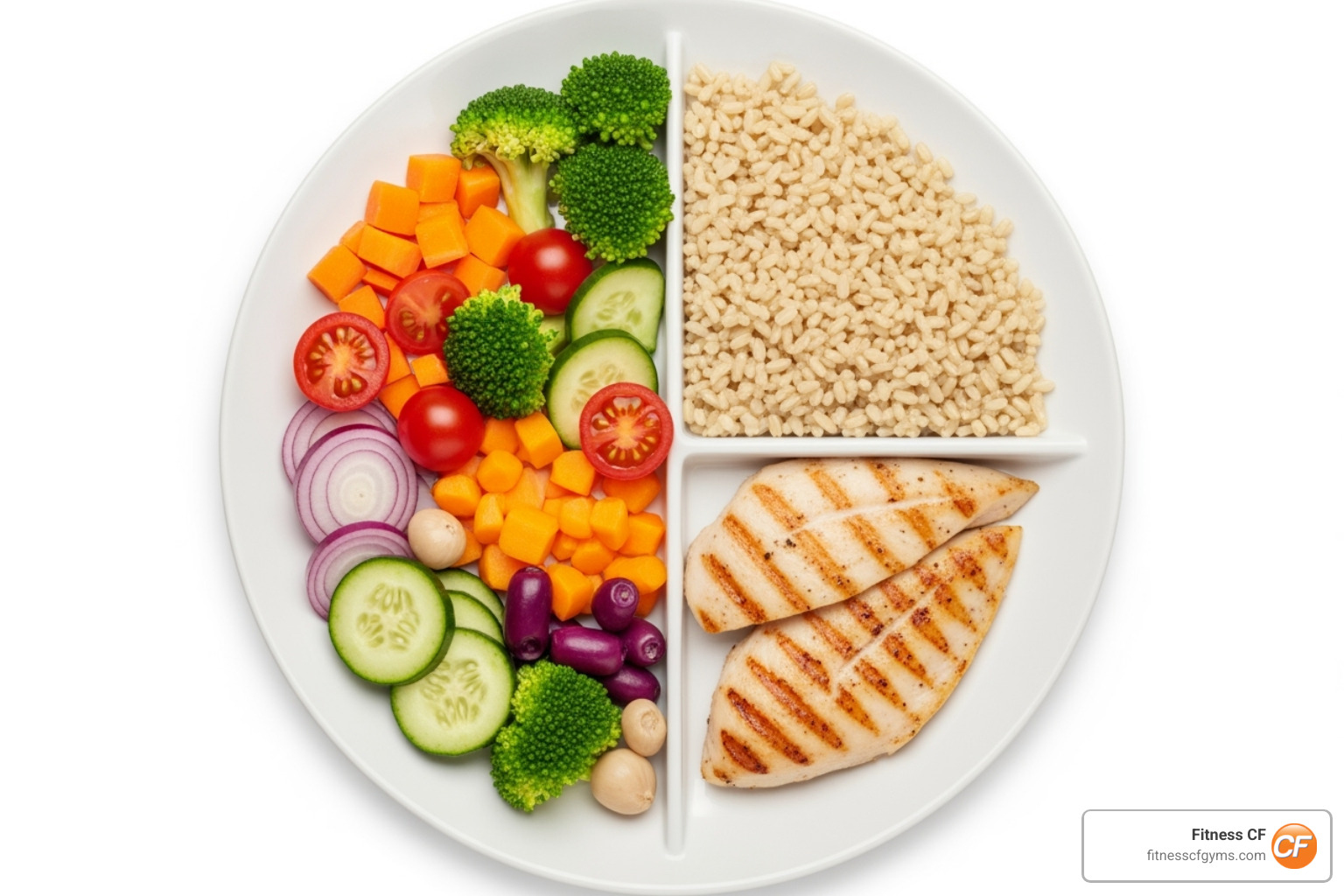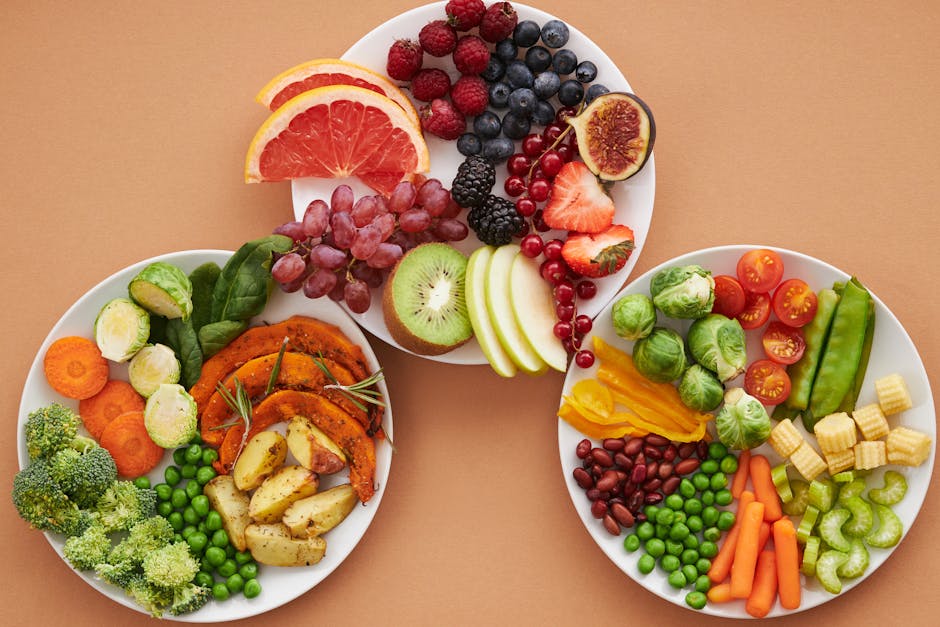Your First Step to a Healthier You
Nutrition tips can transform your energy, mood, and overall well-being—and you don’t need a complete diet overhaul to see results. Here’s what matters most when you’re starting out:
Top Nutrition Tips for Beginners:
- Fill half your plate with vegetables and fruits
- Choose whole grains over refined options like white bread
- Eat adequate protein at every meal to feel full longer
- Limit added sugars found in sodas, sweets, and processed foods
- Stay hydrated with water as your primary drink
- Make small, sustainable changes instead of restrictive diets
Many people struggle with nutrition because they think healthy eating requires drastic changes. However, research shows that even small tweaks—like trading just 10% of your calories from processed meats to fruits, vegetables, and fish—can significantly increase your healthy lifespan.
Healthy eating is about adding good foods, not just removing bad ones. When you focus on what you can eat, nutrition becomes empowering. The foods you choose directly impact your fitness performance, recovery, and how you feel throughout the day.
Studies confirm that up to 80% of premature heart disease and stroke can be prevented through lifestyle choices, with nutrition playing a starring role. Pair a balanced diet with regular physical activity—including both strength training and cardio—and you create a foundation for lifelong wellness.

Mastering the Basics: Building a Healthy Plate
The best nutrition tips start with your plate. No need for complicated calorie counting—just a visual guide that makes healthy eating feel achievable.

The plate method works by dividing your plate into sections: half should be vegetables and fruits, a quarter whole grains, and the remaining quarter lean protein. This flexible approach, championed by experts behind The Healthy Eating Plate, works for any meal.
Vegetables and fruits are packed with vitamins, minerals, and antioxidants. Research from the BMJ found that every extra daily serving of produce—up to five—reduces your risk of dying from heart disease by 4 percent. For adults over 50, a greater variety of colorful produce was linked to a 21 percent lower risk of dying from heart disease.
Aim for a rainbow on your plate. Different colors signal different nutrients. The more variety you eat, the broader spectrum of nutrients you’ll get. Potatoes don’t count toward your vegetable intake on most healthy eating models due to their impact on blood sugar.
Whole grains like brown rice and quinoa provide sustained energy and fiber, while lean protein from sources like fish, poultry, beans, and nuts helps build and repair tissues after exercise. Plant-based proteins are excellent for your body and the environment.
Focus on Key Nutrients
Understanding which nutrients your body needs helps you make smarter choices.
Dietary fiber aids digestion, helps you feel full, controls blood sugar, and lowers cholesterol. Find it in fruits, vegetables, whole grains, legumes, nuts, and seeds. Simple swaps like adding berries to cereal or beans to a salad make a big difference. You can find more good sources of fiber in the Dietary Guidelines for Americans.
Protein is vital for creating new cells, especially after strength training. It also boosts your metabolism, helps you feel full, and reduces cravings. Studies show it’s effective at reducing belly fat. Good sources include lean meats, fish, eggs, legumes, and dairy.
Healthy fats are needed for energy and vitamin absorption. Choose unsaturated fats from sources like extra virgin olive oil, avocados, nuts, and seeds. These foods are packed with nutrients and may help with weight management and reduce the risk of type 2 diabetes and heart disease.
Vitamins and minerals keep your body running smoothly. Many people need more calcium, vitamin D, and potassium. Calcium and vitamin D work together for bone health, found in fortified dairy, sardines, and fortified plant-milks. Potassium, found in foods like beets, beans, and bananas, helps regulate blood pressure. For brain health, focus on omega-3 fatty acids from fatty fish, walnuts, and flax seeds.
Smart Ways to Limit Unhealthy Ingredients
Reducing ingredients that work against your health goals is just as important as adding nutritious ones.
Added sugars are a primary source of preventable health issues. Sugary drinks are a major culprit, linked to obesity, type 2 diabetes, and heart disease. Aim for less than 10% of daily calories from added sugar. Start by replacing sugary drinks with water and read labels to Cut Down on Added Sugars.
Saturated fat should be replaced with unsaturated fats to benefit your heart. It’s found in red meat, butter, and full-fat dairy. Choose lean meats, low-fat dairy, and cook with olive oil. Learn more about how to Cut Down on Saturated Fat.
Sodium in excess raises blood pressure. Over 70% comes from packaged and prepared foods. Reduce your intake by cooking at home with fresh ingredients and using herbs and spices for flavor instead of salt. Get tips to Cut Down on Sodium.
Ultra-processed foods are heavily modified and loaded with sugar, unhealthy fats, and artificial ingredients. They are linked to chronic diseases and designed to be overeaten. Limiting them is one of the most impactful nutrition tips you can adopt.
Fueling Your Fitness: Nutrition and Physical Activity
Nutrition and exercise work together. When they’re in sync, your workouts feel better, your recovery improves, and your energy levels stay steady. Consistency is key.

Research shows that up to 80% of premature heart disease and stroke can be prevented through healthy lifestyle habits, particularly eating well and staying active. When you build a healthy eating routine and pair it with regular exercise, you protect yourself from chronic diseases and invest in staying vibrant and active for years to come.
The Power of Protein for Muscle and Strength
Protein is essential for muscle repair and growth. When you exercise, you create tiny tears in muscle fibers; protein provides the materials to repair them, making them stronger. This is crucial for combating age-related muscle loss (sarcopenia).
A high protein intake also boosts your metabolic rate, increases satiety, and helps reduce belly fat. The Physical Activity Guidelines for Americans recommend resistance training at least twice per week. Combining this with sufficient protein creates ideal conditions for improved body composition and metabolic health. If you’re curious about your specific needs, learn more in The Truth About Protein: How Much Do You Really Need?
Essential Nutrition Tips for Cardio and Energy
Cardiovascular exercise is vital for your heart and lungs. To power these activities, you need the right fuel: whole grains. Foods like brown rice, oatmeal, and quinoa provide sustained energy thanks to their fiber content, preventing blood sugar crashes. They’re also packed with B vitamins that help convert food into energy.
The Physical Activity Guidelines for Americans suggest at least 150 minutes of moderate-intensity aerobic activity each week. This amount of cardio is incredibly effective for heart health and reducing belly fat, which is strongly linked to chronic diseases.
To get the most from your cardio workouts, timing your nutrition matters. What you eat before and after exercise can fuel performance and support recovery. We’ve put together comprehensive nutrition tips on this topic in The Role of Nutrition in Fitness: What to Eat Before and After a Workout.
Actionable Nutrition Tips for Your Daily Routine
Lasting change comes from small, manageable shifts that become second nature. Think of it like building strength: you start where you are and progress over time.

A study published in Nature Food found that swapping just 10 percent of your daily calories from processed meats to healthier options can increase your healthy lifespan. Practicing mindful eating—tuning into your body’s hunger signals and eating without distractions—is another powerful tool that shifts the focus from restriction to awareness.
Meal Planning and Shopping on a Budget
A little planning saves time, money, and stress. Creating a weekly meal plan is one of the most effective nutrition tips for preventing last-minute unhealthy choices. Once you have a plan, write a grocery list and stick to it. Shopping the perimeter of the store, where fresh foods are located, helps you focus on whole foods.
Choosing unprocessed options like fresh or frozen produce, bulk grains, and dried beans is healthier and often more budget-friendly. Frozen produce is just as nutritious as fresh and can be cheaper. For more practical guidance, check out Shop Simple with My Plate and our guide on Nutrition and Fitness: Meal Planning Tips for Busy Professionals.
Debunking Common Nutrition Myths
Understanding nutritional facts helps you make confident decisions about your health.
Myth: Carbs make you fat.
Truth: The type of carbohydrate matters. Refined carbs can contribute to weight gain, but complex carbs from whole grains, fruits, and vegetables provide essential energy and fiber.
Myth: Eggs are bad for your heart.
Truth: For most people, eggs have little effect on blood cholesterol. They are a powerhouse of protein and nutrients and can be part of a healthy diet.
Myth: You must avoid all fats.
Truth: Healthy unsaturated fats are crucial for brain and heart health. Find them in avocados, nuts, seeds, and olive oil. Limit saturated and trans fats.
Myth: Diets are the best way to lose weight.
Truth: Diets are generally ineffective long-term and can predict future weight gain. Focus on sustainable lifestyle changes, not restrictive dieting. For more insights, read our full article Debunking Common Nutrition Myths.
Frequently Asked Questions about Healthy Eating
Here are answers to some of the most common questions about starting a healthier lifestyle.
How can I stay hydrated properly?
Proper hydration is one of the simplest yet most powerful nutrition tips. Your body depends on water for energy, temperature regulation, and nutrient transport. A good rule of thumb is to drink enough that you rarely feel thirsty; pale yellow urine is a good indicator of hydration.
Water should be your go-to drink. Sugary beverages like sodas, energy drinks, and even fruit juices are loaded with added sugars and offer little nutritional value. If plain water feels boring, try herbal teas or infuse your water with lemon, cucumber, or berries for a natural flavor boost.
What’s the best way to start making changes without feeling overwhelmed?
Trying to change everything overnight often leads to burnout. The secret is starting small. Pick one manageable change, like swapping soda for water or adding vegetables to dinner. Once it becomes a habit, add another. This gradual approach creates lasting change.
A helpful mindset is to focus on adding healthy foods rather than just restricting what you eat. This naturally crowds out less nutritious options without a feeling of deprivation. It’s empowering rather than punishing.
Perfection is not the goal. If you have an off day, get back on track with your next meal. What matters is consistency. Celebrate your small victories along the way to build confidence and momentum.
Does healthy eating help prevent diseases?
Yes, the food you eat has a profound impact on your long-term health. Up to 80% of premature heart disease and stroke can be prevented through lifestyle choices, with nutrition playing a key role. Healthy eating patterns improve cholesterol, lower blood pressure, and help maintain a healthy weight.
These dietary changes can also prevent or help manage type 2 diabetes by stabilizing blood sugar levels. By focusing on nutrient-dense whole foods, you can maintain a healthy weight more effectively than with restrictive dieting, which is a key factor in preventing obesity.
A healthy diet also strengthens your immune system, improves gut health, and supports brain function. As studies on diet quality and chronic disease risk show, a holistic lifestyle—good nutrition, regular exercise, sleep, and stress management—is your best defense against chronic disease.
Conclusion: Your Journey to Lifelong Health and Wellness
The beauty of healthy eating is that it doesn’t require perfection—it’s about building sustainable habits that work for your life. Let’s recap the essentials: Fill half your plate with colorful vegetables and fruits. Choose whole grains and lean proteins. Focus on adding nutrient-rich foods, stay hydrated with water, and limit added sugars and processed foods. These simple nutrition tips are the foundation of wellness.
Consistency beats intensity every time. It’s about making better choices most of the time. When you pair balanced nutrition with regular physical activity—both strength training and cardio—you create a powerful synergy that prevents chronic disease and boosts energy.
Think of nutrition as a form of self-care. Every nutritious meal is an investment in your future self—the one who wants to feel energized and ready for the day.
If you’re ready for personalized support, a structured fitness and nutrition plan can help you reach your goals. Get started with Personal Training to build a sustainable routine and feel strong, healthy, and confident for years to come.
Your journey to lifelong health starts with the next choice you make. We’re cheering you on every step of the way.







